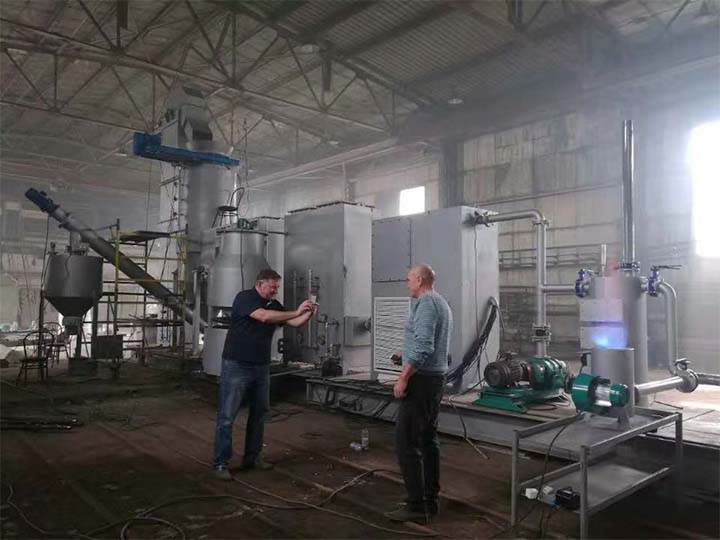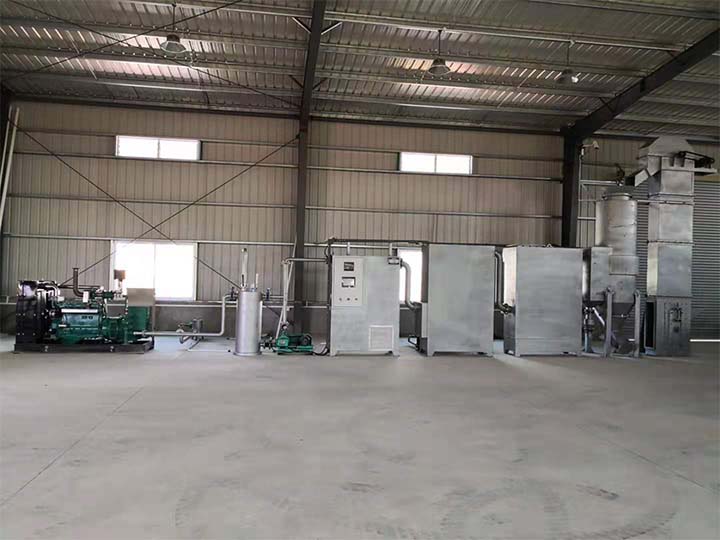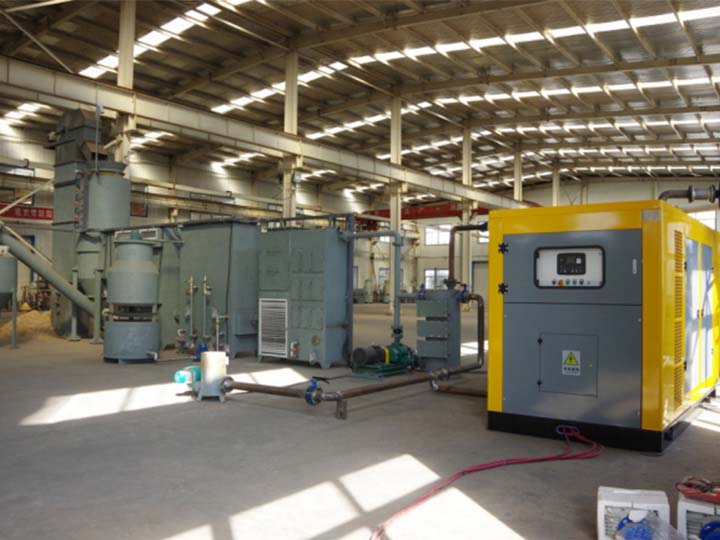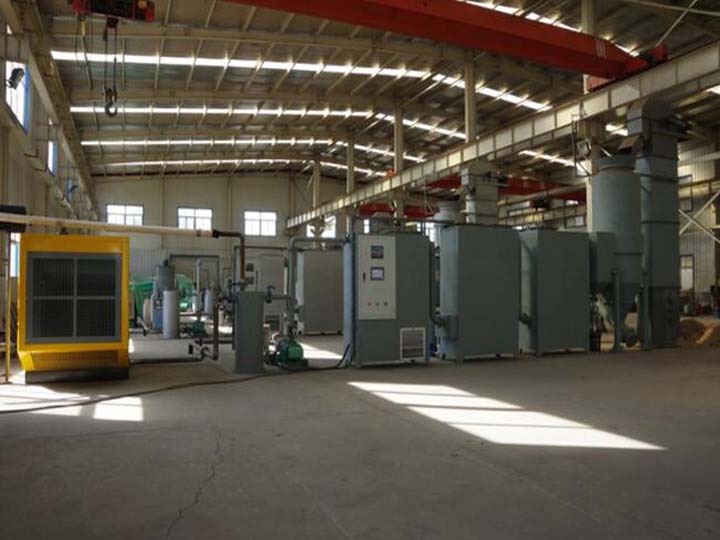Газификация биомассы — это использование низкокалорийных источников энергии из биомассы, которые подвергаются редокс-реакции при определенных условиях реакции, в результате чего образуются горючие газы, такие как водород и угарный газ. Газ, полученный в результате этой реакции, может быть использован либо непосредственно для обеспечения тепловой энергии, либо для производства электроэнергии.
Что такое биомассовая энергия?
Источник биомассовой энергии — солнечная энергия. Биомассовая энергия — это энергия, накопленная микроорганизмами, растениями и животными в процессе фотосинтеза. Источник биомассовой энергии очень широк. Общими источниками биомассовой энергии являются солома, отходы деревообработки, навоз животных, бытовые отходы городов, промышленные отходы, такие как резина, пластиковые отходы и т. д.
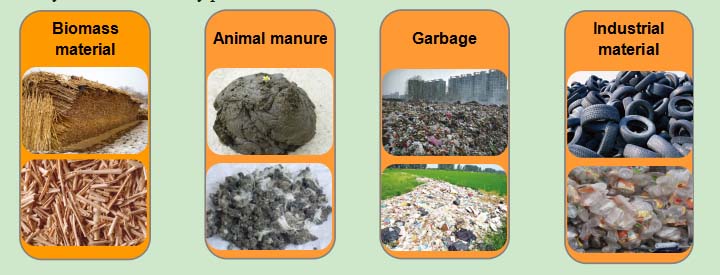
Каковы характеристики биомассовой энергии?
- Защита окружающей среды: Прежде всего, сырьевые материалы — это все виды отходов, что решает проблему утилизации некоторых отходов. Во-вторых, после реакции окислительно-восстановления образуется газ — угарный газ (CO), водород (H2), метан (CH4полиацетилен(CмНн) и другие горючие газы, которые не причиняют никакого вреда окружающей среде.
- Возобновляемая энергия: Энергия биомассы может быть снова произведена через фотосинтез растений и животных. Она относится к возобновляемым источникам энергии, таким как солнечная энергия, энергия воды, энергия ветра и т.д.
- Богатство общей суммы: Биомассовая энергия, являясь четвертым по величине источником энергии на Земле, имеет широкий спектр источников. Согласно статистике, биомассовая энергия, производимая Землей каждый год, составляет примерно в 10 раз больше энергии, потребляемой человечеством, в то время как уровень ее использования человечеством составляет менее 3%.
- Низкая стоимость производства: Стоимость переработки биомассы низка, поэтому стоимость использования биомассы для генерации электроэнергии очень низка, близка к 0,2-0,3 юаня за кВт·ч, что эквивалентно 60%-70% стоимости использования угля для генерации электроэнергии.
В связи с вышеупомянутыми характеристиками биомассовой энергии, все больше стран начали обращать внимание на использование такой энергии. Использование биомассовой энергии для обеспечения электроэнергией или производства электричества является тенденцией будущего развития.
Введение в газификацию биомассы
После неполного сгорания и реакции окислительно-восстановительного процесса биомассовой энергии в газификаторе будет произведена серия горючих газов. Этот процесс называется газификацией биомассовой энергии.
Рабочий процесс
Сушка → пиролиз → окисление → восстановление → очистка → сжигание и использование горючих газов
Относительные устройства
Газификатор-охладитель-коллектор пыли-очиститель смолы-разделитель смолы-внутренний генератор сгорания / котел и т.д.
Процесс газификации
Газификатор в основном делится на пять слоев: воздушный слой, слой сушки, слой пиролиза, слой окисления и слой восстановления.
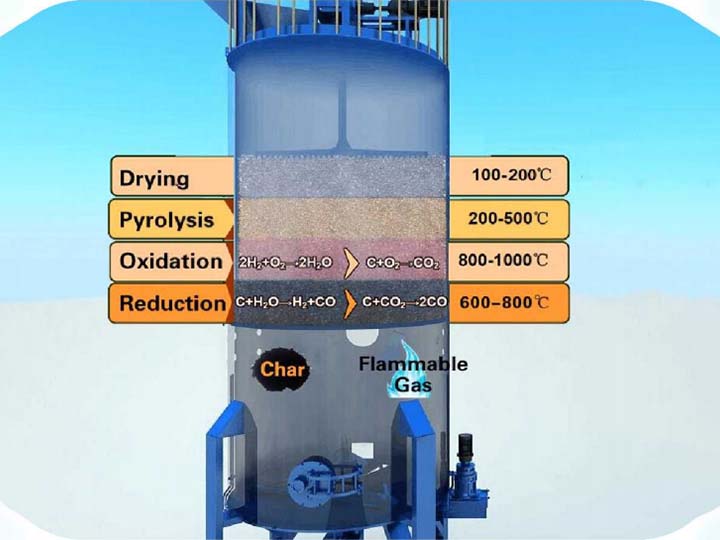
После того как биомасса попадает в газификационную печь, она сушится и нагревается. По мере повышения температуры летучие вещества осаждаются при высоких температурах и проходят реакцию пиролиза. Пиролизный газ и карбид реагируют, образуя водяной пар и углекислый газ. В то же время выделяемое тепло может быть использовано для эндотермического восстановления и пиролиза смолы, чтобы достичь наилучшего использования тепла.
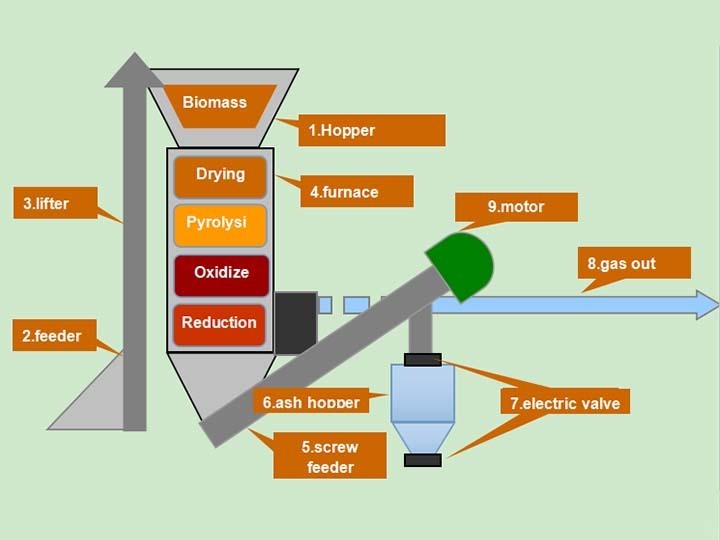
Пыль выбрасывается из спирального конвейера внизу газификатора, а газ выбрасывается из выпускного отверстия. В это время полученный газ не может быть непосредственно использован в производстве, его также необходимо очистить и отфильтровать, чтобы удалить пыль и смолу внутри газа, прежде чем его можно будет использовать.
Процесс очистки
- Устройство для удаления примесей: Весь комплект оборудования оснащен 6 комплектами Sacron для обеспечения хорошего эффекта удаления примесей.
- Охлаждающее устройство: Синтетический газ проходит через холодный воздух, конденсируя воду и смолу внутри него. В этом процессе синтетический газ не контактирует напрямую с воздухом внутри машины, а проходит через воздуховод внутри машины.
- Дегазационный фильтр: Фильтр для смолы состоит из четырех удалителей смолы, погруженных в воду.
- Дегазационный сепаратор: Эта машина включает в себя охлаждающее устройство, которое может конденсировать воду и смолу, а затем использовать метод сухой фильтрации для удаления смолы с помощью центрифугирования.
- Фильтр: Внутри фильтра содержится активированный уголь и нержавеющая стальная фильтровальная сетка для окончательной фильтрации смолы и водяного пара.
- Корневой воздуходув: Рутс-воздуходувка является источником энергии для всего процесса газификации и системы очистки. В процессе производства рутс-воздуходувка играет не только роль в поддержании работы машины под отрицательным давлением, но и способствует полной газификации реакции, не производя при этом слишком много углекислого газа.
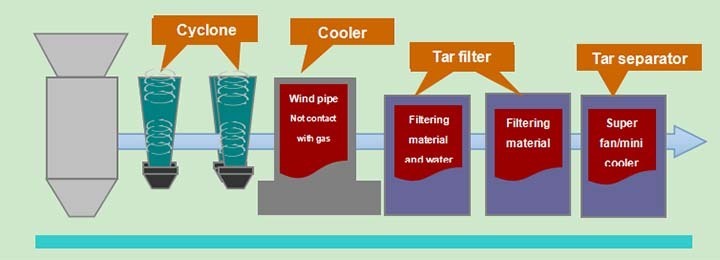
Требования к сырью для газификации биомассы
- Размер сырья: Размер частиц или блоков биомассы не должен превышать 30 мм.
- Влажность сырья: содержание влаги должно быть ≤20%
Видео: электростанция на биомассовой газификации мощностью 200 кВт
Параметры линии газификации биомассы
Параметры газификатора KX-300SA
| Выход синтетического газа | 300 м³/ч | Калорийная ценность синтетического газа | 1000-1200 ккал/м3 |
| Потребление топлива | 150 кг/ч | Энергоснабжение | 380В 50Гц/60Гц |
| Эффективность газификации | >72% | Мощность газификатора | 18кВт |
| Сопоставляющий движок | 100 кВт | Сырьё | длина размером < 30 мм, |
| требования | влажность < 20% | ||
| Сертификат | CE | Место происхождения | город Чжэнчжоу, Китай |
| Размер установки | (Длина × ширина × высота) 14м×3.5м×5.16м | ||
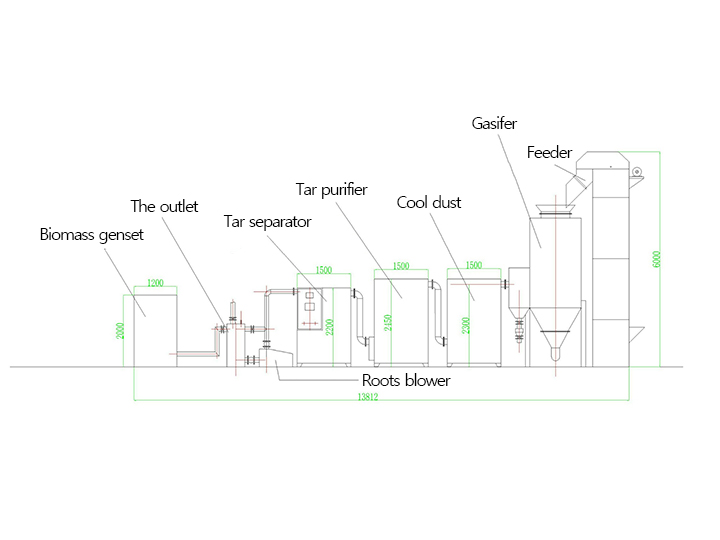
Область поставки газификатора
| № | Имя | Части | Номер | Замечания |
| 1 | Часть корпуса печи | Корпус печи | 1 | Газификаторный реактор |
| зарядное устройство | 1 | Транспортировка сырья | ||
| Интерфейс зарядки | 1 | Сопоставление | ||
| Шнековый разрядник золы | 1 | Механическое удаление золы | ||
| Золоотвод | 1 | Временное хранение угольной золы | ||
| Электрический бабочка-клапан | 4 | Задвижка удалителя золы | ||
| Видеонаблюдатель | 1 | Наблюдение за сгоранием в камере газификатора | ||
| Защитная плита топки | 1 | Защита безопасности | ||
| Уровнемер | 2 | Контроль количества сырья в печи и количества углеродной золы в бункере для золы | ||
| Датчик температуры | 3 | Управление подачей и удалением золы | ||
| Железный конус | 1 | Вспомогательные материалы | ||
| 2 | Пылесос | Циклонный пылеуловитель | 6 | Дедустинг синтетического газа |
| Вентилятор для охлаждения воздуха | 1 | охлаждение | ||
| Датчик температуры | 1 | Температура обнаружения | ||
| 3 | Охладитель | Охладитель | 1 | Газовое охлаждение |
| Вентилятор | 1 | Охлаждение | ||
| 4 | Очищение смолы | Он содержит четыре комплекта устройств для удаления смолы и один комплект водяных охладителей газов. | 1 | Удаление смолы |
| Охладитель | 1 | Циркуляционное охлаждение воды | ||
| Циркуляционный насос воды | 1 | Циркуляция охлаждающей воды | ||
| Датчик температуры | 1 | Температура обнаружения | ||
| 5 | Таровый фильтр | Газохладитель | 1 | Охлаждение синтетического газа |
| Центрифуга для смолы | 1 | Сепарация смолы | ||
| Сухой фильтр | 1 | Отфильтрованный смола | ||
| Датчик температуры | 1 | Температура обнаружения | ||
| 6 | Корневой воздуходув | Корневой воздуходув | 1 | Обеспечение энергией для газификации биомассы |
| Датчик давления | 1 | Управление корневыми воздуходувками | ||
| Резиновое мягкое соединение | 2 | Поглощение ударов и снижение шума | ||
| 7 | Бабочка из политетрафторэтилена | 3 | Управление транспортировкой синтетического газа | |
| 8 |
Газораспределитель | Содержит три комплекта сухих фильтров | 1 | Фильтрация синтетического газа |
| Факел | 1 | Контроль качества синтетического газа | ||
| 9 | Контрольный шкаф | ПЛК | 1 | Система управления работой оборудования |
| 10 | Соединительная труба | Сварка | Соединение газификатора | |
| 11 | Болты и асбестовые прокладки | Соединители и уплотнения газификатора | ||
| 12 | Сумка для инструментов | 1 | Инструмент для установки оборудования |
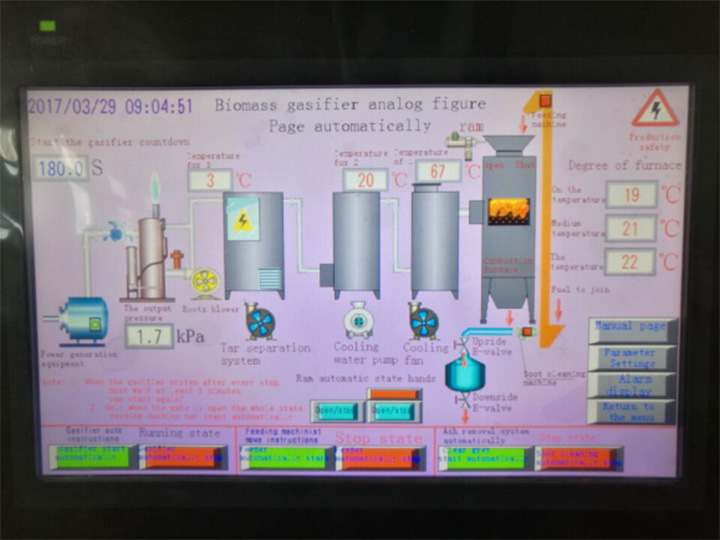
Объем поставки генератора
| Модель (Тип двигателя) | 118D12TL-2 |
| Резервная мощность | 100КВт |
| Номинальная скорость (об/мин) | 1500/1800 |
| Номинальная частота | 50Гц / 60Гц |
| Номинальное напряжение | 400В/230В |
| Фаза | Переменный ток 3-фазный, 4 провода |
| Стабильность напряжения | ≤±1% |
| Импульсное напряжение | ≤-10%–+20% |
| Время стабильного напряжения | ≤3с |
| Потребление тепла | ≤11мдж/Кв.ч |
| Расход смазки | ≤1.0г/Кв.ч |
| Объем двигателя | 151.8 Л |
| Номер цилиндра | 6-В |
| Диаметр цилиндра | 128мм |
| Ход | 152 мм |
| Система запуска | DC 24V электрический мотор |
| Метод охлаждения | водяное охлаждение |
| Метод смазки | Пассивная и летучая смазка |
| Класс изоляции | Н |
| Защита | IP23 |
| Генератор | Китайский Стэмфорд |
| Коэффициент мощности | 0.8 с запаздыванием |
| Метод возбуждения | бесщеточный |
| Цвет | ваш выбор |
| Сертификаты | ISO 9001:2008, CE |
| Гарантия | 1 год или 1000 рабочих часов, в зависимости от того, что наступит раньше |
| Тип | Открыть |
| Система управления | Автоматическая система сигнализации |
| Размер | 2850x1100x1750мм |
| Вес | 2350кг |
Успешный случай
Клиенты из России посетили наш завод и провели углубленный обмен мнениями с нашим техническим персоналом.
